Museums & Institutions
Ukrainian Professor Recounts Moment Russian Air Strike Destroys Kyiv Art School
Myroslav Vayda said the missile struck “right next door” to the classroom he was in.
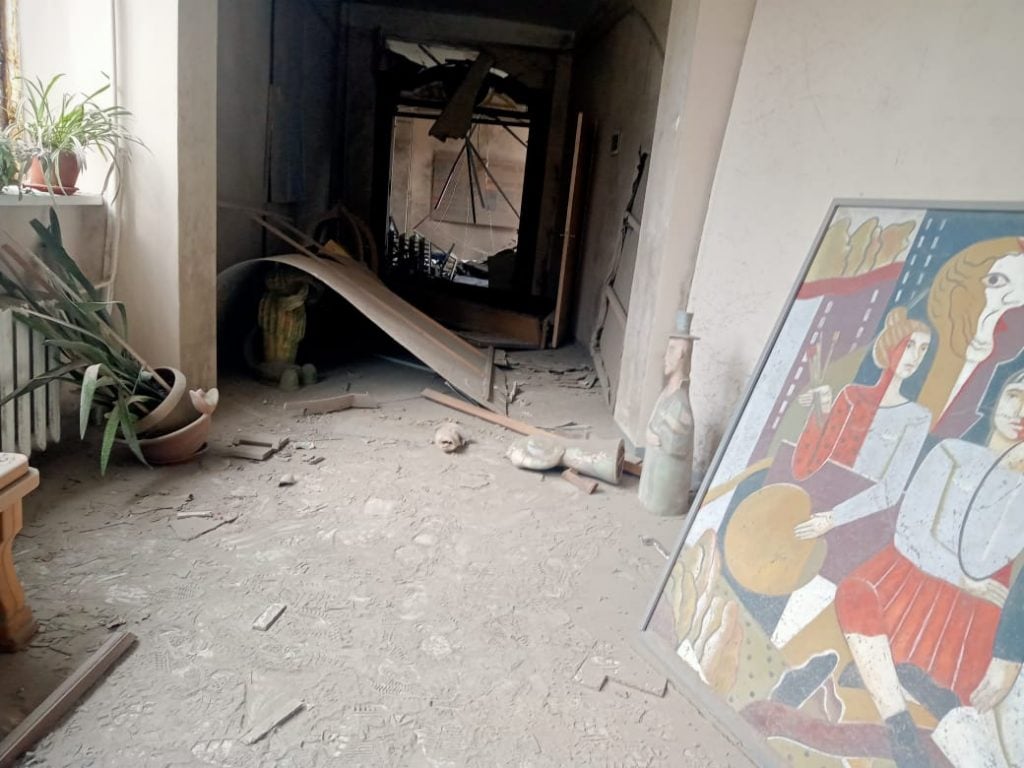
Myroslav Vayda said the missile struck “right next door” to the classroom he was in.

Adam Schrader

Myroslav Vayda, a professor at a famed school in Kyiv, was finishing up teaching a freshman class when he heard the air raid siren warning of an incoming Russian missile. The attack destroyed the gym, a painting classroom, and a conference hall at the Mykhailo Boychuk Kyiv State Academy of Decorative and Applied Arts and Design. Another building that housed the school’s assembly hall and gallery was partially damaged.
“I ordered the students to grab their bags and relocate to the bomb shelter in the basement of the academy,” Vayda said through a translator in a video interview.
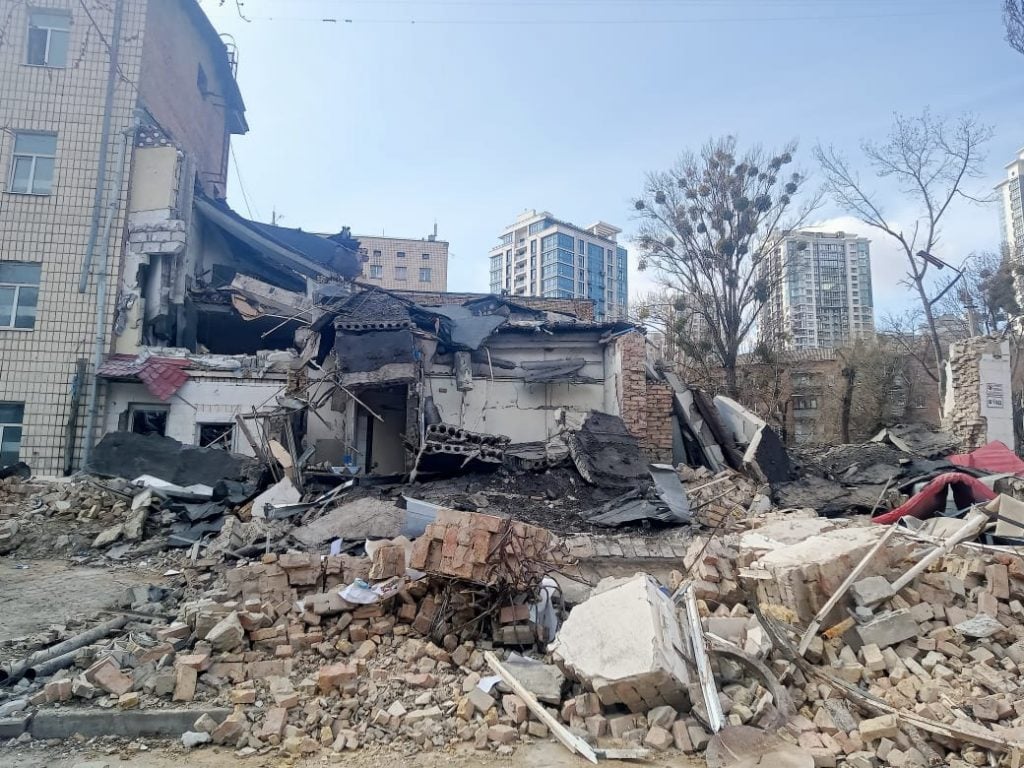
A building of the Boychuk Kyiv State Academy of Decorative and Applied Arts and Design is seen destroyed after a missile strike. Photo courtesy of Myroslav Vayda.
The missile hit the school around 10:30 a.m. on March 25, about 30 seconds after the air raid siren went off and before the students made it to the shelter. “Everybody was quickly gathering their things and ready to go at the door of the classroom when it happened,” Vayda said. He ordered everyone to lie down, and they immediately fell to floor, sparing them from flying debris.
Vayda said the bombing happened “right next door” to the classroom he was in, less than a dozen feet away. He called it a miracle that only one person was injured in the attack, Aneta Kolisnyk, a professor of academic painting who was at her workstation.
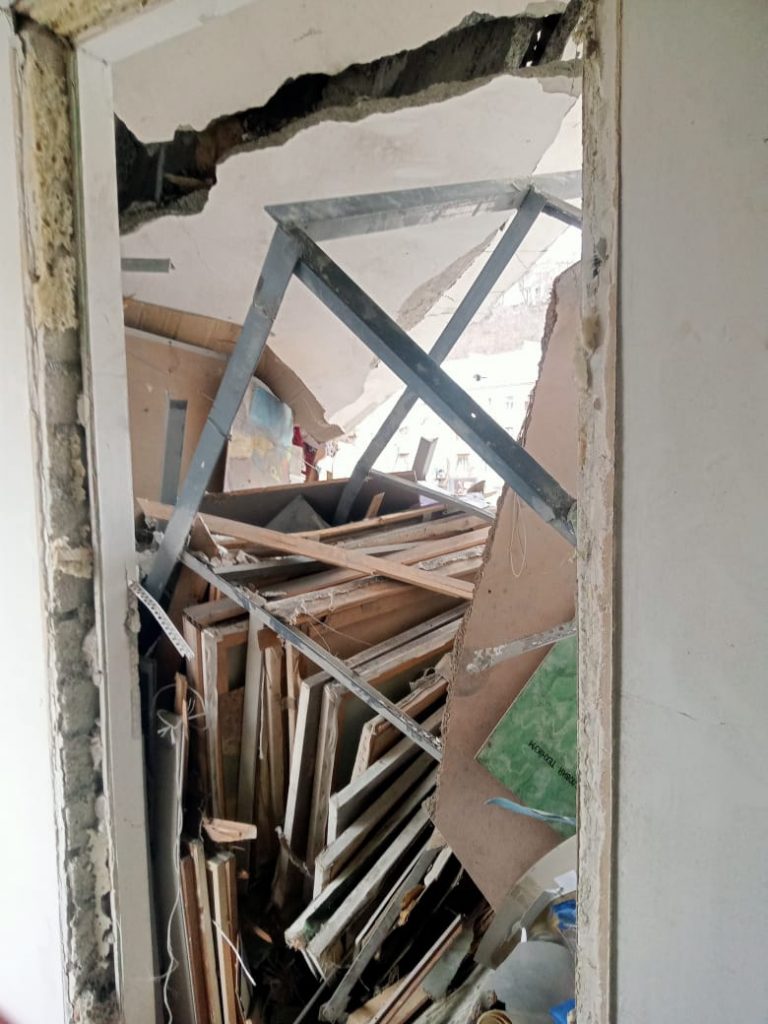
Debris is seen blocking the inside of the Boychuk Kyiv State Academy of Decorative and Applied Arts and Design, which was hit by a Russian missile. Photo courtesy of Myroslav Vayda.
Helen Osadcha, the head of the university, said in a statement that Kolisnyk’s life was spared because she moved quickly away from the window when she heard the siren. She was treated for her injuries at a local hospital.
“It was a miracle only one person was injured because a quarter of our academy was just destroyed,” Vayda said. “We are shocked she survived because it looked really bad.”
Vayda said it was too soon to discuss the long-term implications of the attack on the future of the students and the university, but he said he did not notice any immediate panic attacks among students. Psychologists were provided by officials at the scene.
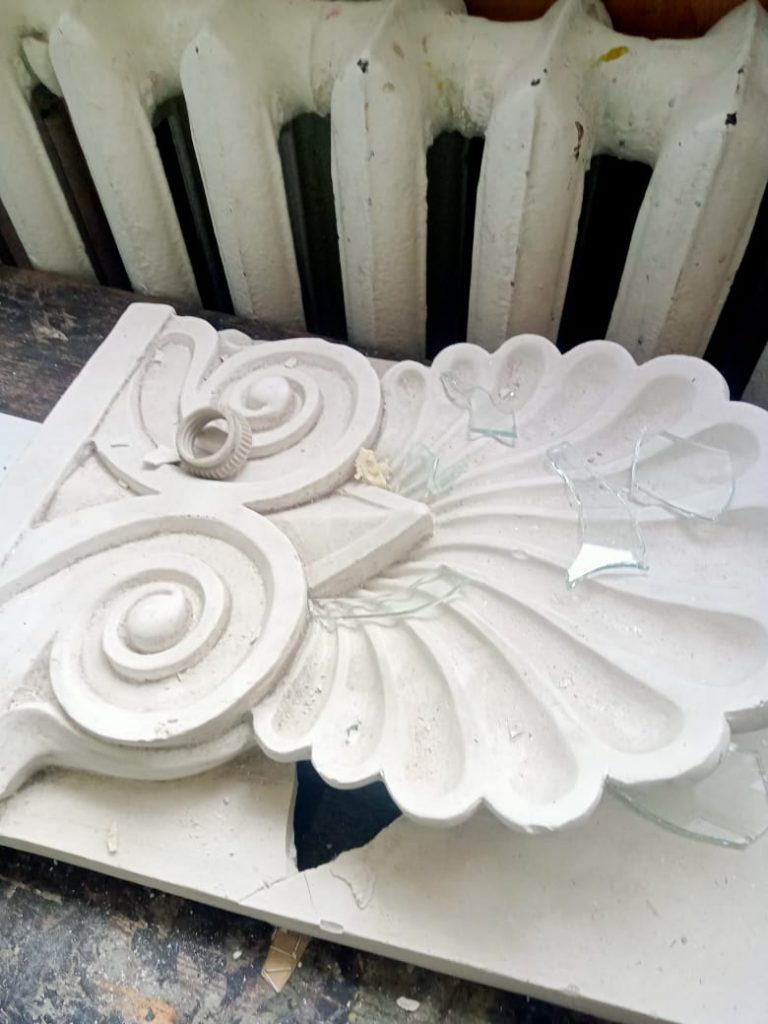
Debris is seen blocking the inside of the Boychuk Kyiv State Academy of Decorative and Applied Arts and Design, which was hit by a Russian missile. Photo courtesy of Myroslav Vayda.
“Right now, it’s a little unclear how to proceed. The school is remote right now, and students have volunteered to clean the rubble and restore the building,” said Vayda, who spent Tuesday supervising the clearing of the debris. “They are very eager to return to normal and resume their studies, but there is no announcement right now.”
At the time of the blast, the university was also holding a competitive exhibition titled “Woman In The Flames Of War” in the conference hall. All the works in it were destroyed, Osadcha said, as well as an archive of works by students from the school’s painting department.
“For two years of full-scale invasion, so many people have lost beloved people, family and friends, that as painful as it is, it puts in perspective the loss of something that is material—even artworks,” Vayda said. “In this case, everyone is relieved that nobody actually died so that’s what they find most important.”
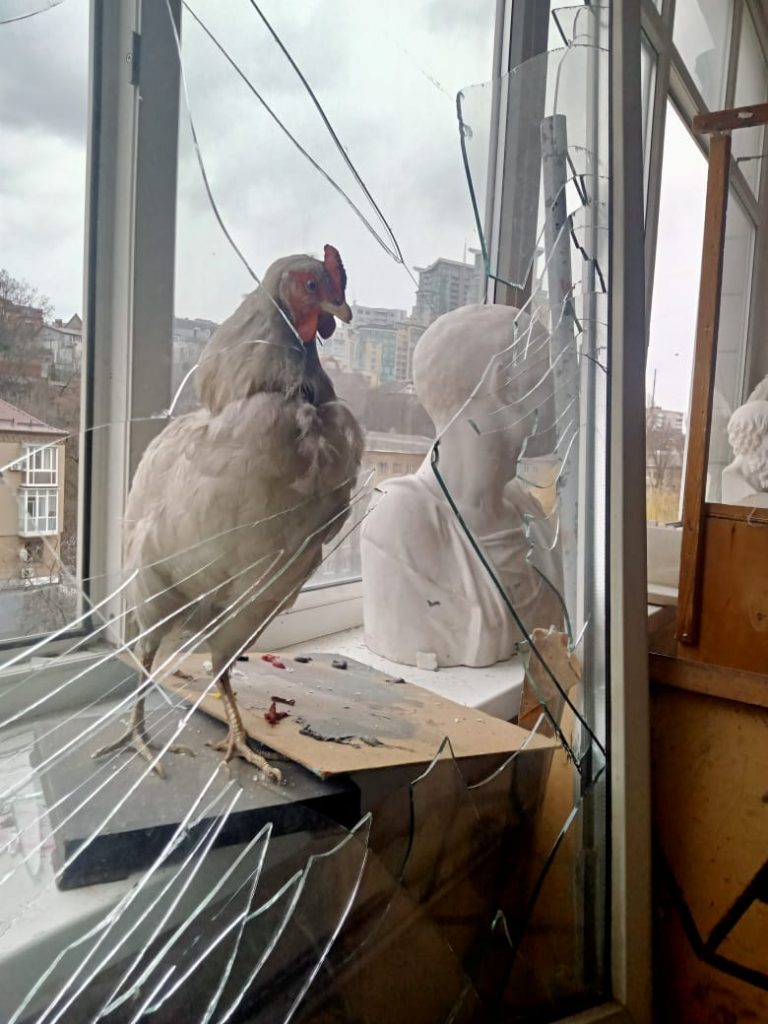
Blown out windows are seen in the Boychuk Kyiv State Academy of Decorative and Applied Arts and Design, which was hit by a Russian missile. Photo courtesy of Myroslav Vayda.
It is believed that what hit the school were remnants of a missile intercepted by Ukrainian forces, which fell and exploded on impact but Vayda said the damage looked more targeted than that because of the amount of destruction.
“We are witnessing Russian war crimes against humanity. The enemy is trying to destroy Ukraine as a nation, erase our identity, destroy cultural monuments, rewrite our history, and appropriate the spiritual and cultural heritage of Ukraine,” Osadcha said in her statement. “They are well aware that without culture there will be no nation. After all, culture is the key to state-building and national security.”
Speaking of what his students have endured through more than two years of Russia’s war, Vayda, who is himself also a practicing contemporary artist, hailed the young artists for their resiliency.
“Some of them left with their parents to Europe, others endured occupation, others were captured as hostages. Absolutely different lives,” Vayda said. “But they all came back to study. And when they come to classes, they are full of life, hug and cheer each other when they meet and they are absolutely talented.”
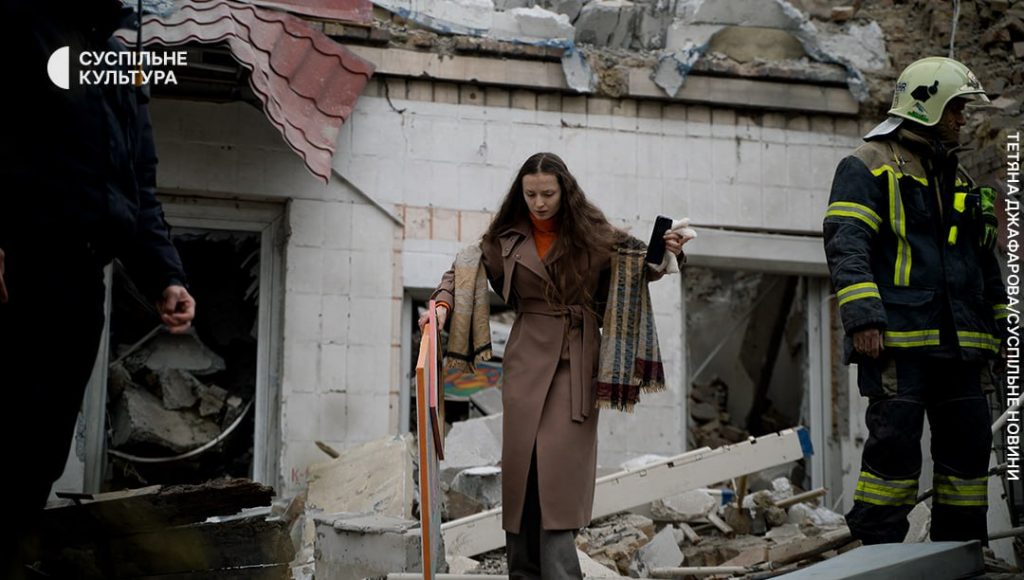
An artist retrieves paintings from the rubble of the Kyiv Academy of Decorative Arts and Design, damaged by Russian missile strikes on March 25. Photo courtesy of Suspilne Cultura
The art school, in Ukraine’s capital, is named for the famed artist executed by the Soviet Union in 1937. It offers degrees up to the PhD level.
Rostyslav Karandieiev, the acting minister at the Ministry of Culture and Information Policy of Ukraine, said in a statement on social media that he had rushed to the scene after the air strike.
“All emergency services are working at the scene,” Karandieiev said. “The extent of the damage will be assessed as soon as possible and measures will be taken to carry out emergency work at the destroyed facilities.”